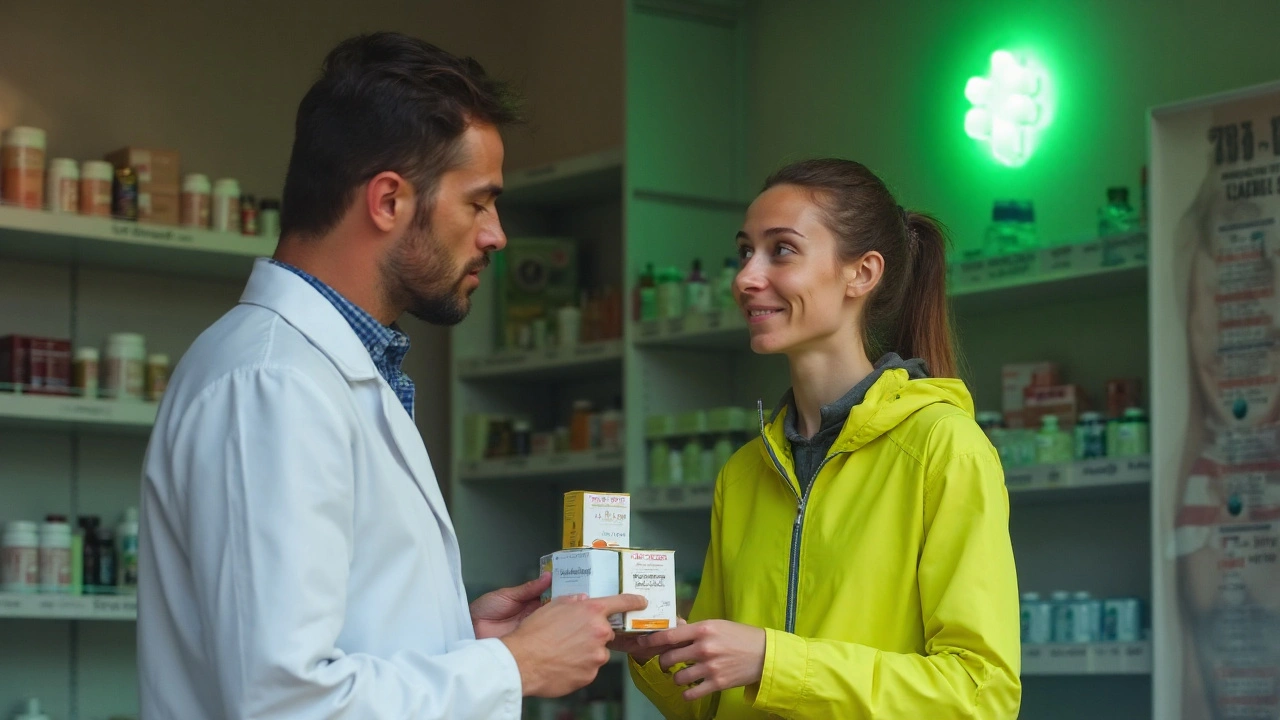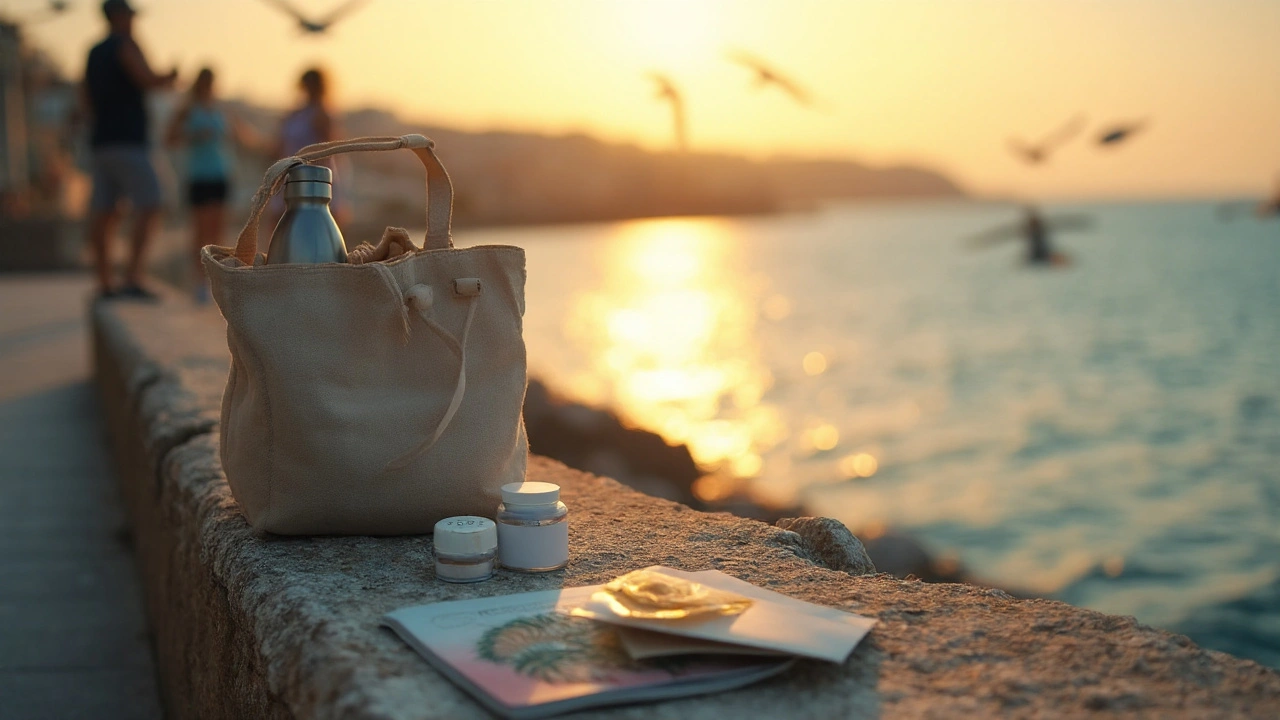You want fewer aches, better movement, and skin that doesn’t give away your birth year. The problem? Most anti-aging advice ignores joints. If your knees hurt, you train less, sleep worse, and your biological age drifts up. That’s where collagen type II comes in. It targets cartilage and the immune triggers behind creaky, inflamed joints-an aging bottleneck no serum can fix. Expect improved comfort and mobility first; looks follow when you can move, lift, and sleep again.
TL;DR: Why Collagen Type II Is a True Anti‑Aging Lever
- Mobility is a core anti-aging metric. Type II collagen (especially UC‑II, an undenatured form) has human trials showing better joint comfort and function, which helps you keep training.
- Mechanism matters: UC‑II trains oral tolerance (immune balance), while hydrolyzed type II provides cartilage building blocks. Different paths, both useful.
- Evidence snapshot: Randomized trials (2009, 2013, 2016) show UC‑II 40 mg daily outperforms or matches glucosamine/chondroitin for knee comfort and function. Benefits often start in 4-8 weeks.
- Skin angle: Type II itself isn’t your main wrinkle fixer (that’s type I/III peptides). But when joints feel good, you lift more, walk more, and sleep better-habits linked to younger biological age.
- Practical: Choose UC‑II (40 mg nightly) or hydrolyzed type II (1-2 g daily). Stack with vitamin C, hyaluronic acid, and omega‑3s. Track pain and step count; reassess at 12 weeks.
Step‑by‑Step: Choose, Dose, and Track Collagen Type II
Before the how-to, a quick primer: Type II collagen is the main collagen in joint cartilage (type I/III dominate skin and tendons). Two useful forms show up on shelves:
- UC‑II (undenatured type II): micro‑dosed, keeps the protein’s native shape so immune cells learn to chill out around joint collagen. Think immune modulation, not bulk building.
- Hydrolyzed type II or chicken sternum cartilage extract: broken into peptides and paired naturally with chondroitin sulfate and hyaluronic acid; think building blocks and lubrication support.
-
Decide what you’re solving first. If you want less knee or shoulder grumbling during workouts or long walks, UC‑II is the cleanest, evidence‑heavy start. If your aim is general joint nourishment with a side of skin hydration, hydrolyzed type II/chicken sternum extracts can pull double duty.
-
Pick your format and dose.
- UC‑II: 40 mg once daily (often one small capsule). Best taken in the evening or with your lightest meal.
- Hydrolyzed type II/chicken sternum collagen: 1-2 g daily (check label for standardized hyaluronic acid and chondroitin content). Split dose if stomach is sensitive.
-
Time it right. UC‑II works via immune tolerance, so consistency beats timing. Many feel fewer aches when taking it at night. Hydrolyzed type II pairs well with breakfast plus vitamin C (50-200 mg) to support collagen synthesis.
-
Stack smart (optional, but effective).
- Vitamin C: 100-200 mg/day to support collagen formation.
- Hyaluronic acid: 100-150 mg/day for joint lubrication; common in chicken sternum blends.
- Omega‑3s: 1-2 g EPA+DHA/day to nudge inflammation down.
- Boron: ~3 mg/day may help cartilage health and vitamin D action.
- Type I/III collagen peptides: 5-10 g/day if you also want skin elasticity and tendon support. Different target, complementary result.
-
Track two outcomes: comfort and capacity. Use a 0-10 pain scale for your problem joint and set activity targets (steps, squats, rides). The anti-aging win is doing more with less discomfort.
-
Set a fair timeline. UC‑II: expect first changes around week 4, clearer gains by weeks 8-12. Hydrolyzed type II: gradual, often weeks 6-12. Keep training in a joint‑friendly way.
-
Reassess at 12 weeks. If you’re at least 30% better on your comfort/capacity measures, keep going. If not, check form, shoe wear, load management, and add physio‑guided strength work before you blame the supplement.
-
Safety checks. If you’re allergic to chicken or eggs, skip chicken‑sourced products. If pregnant, breastfeeding, on anticoagulants, or managing autoimmune disease, talk to your GP. In New Zealand, supplements are sold as foods; check Medsafe advisories and stick to brands with batch testing.
Evidence signals you can trust: In osteoarthritis and active‑adult studies, UC‑II at 40 mg/day improved knee comfort and function compared with placebo and, in one trial, outperformed glucosamine/chondroitin (Crowley et al., International Journal of Medical Sciences, 2009; Lugo et al., Journal of the International Society of Sports Nutrition, 2013; Lugo et al., Nutrition Journal, 2016). For skin, most of the solid wrinkle and elasticity gains are from type I/III peptides (Proksch et al., Skin Pharmacology and Physiology, 2014), not type II-so think joint‑first, skin‑second via lifestyle.

Examples and Use Cases: Who Benefits and How Fast
Here are real‑world snapshots I see again and again (I live in windy Wellington; hills expose weak links fast):
- The desk athlete (late 30s): Starts UC‑II at 40 mg. By week 6, morning patella pain drops from 6/10 to 3/10. Can add a second squat day and hits 10,000 steps on Cuba Street without limping. Sleep improves because pain wakes them less.
- The runner with crunchy ankles (mid‑40s): Chooses hydrolyzed type II at 2 g/day plus 120 mg hyaluronic acid. By week 8, ankle stiffness on first 2 km eases, stride smooths, and cadence rises. Adds hill repeats again, cautiously.
- The lifter with shoulder gripes (50+): UC‑II nightly. Pain with overhead press shifts from 5/10 to 2/10 by week 8. Adds rotator cuff work and reduces NSAID use (with their GP’s okay).
- The skin‑and‑joint combo (early 40s): Hydrolyzed type II blend mornings + type I/III peptides nights. Knees feel looser on the Southern Walkway; skin dryness eases around week 10. Two birds, one habit stack.
To cut through confusion, here’s a compact comparison you can screenshot:
| Collagen type/form | Main target | Typical dose | Mechanism highlight | Evidence notes (human) |
|---|---|---|---|---|
| UC‑II (undenatured type II) | Joint comfort/function | 40 mg/day | Immune tolerance to joint collagen | Improves pain/function vs placebo; favorable vs glucosamine/chondroitin in knee OA |
| Hydrolyzed type II / chicken sternum extract | Cartilage support, joint lubrication | 1-2 g/day | Peptides + chondroitin/HA supply | Gradual support for comfort and stiffness; skin hydration benefits likely when HA included |
| Type I/III collagen peptides | Skin, tendons | 5-10 g/day | Peptides for collagen synthesis | Improves skin elasticity and wrinkle depth in multiple RCTs |
| Glucosamine + chondroitin (non‑collagen) | Joint comfort | 1.5 g + 1.2 g/day | Cartilage matrix components | Mixed results; slower onset; may help some knees |
NZ‑specific note: You’ll find UC‑II and chicken sternum extracts at pharmacies and online stores across Aotearoa. Month‑long supply runs roughly NZD $40-$90 in 2025. Look for brands stating “UC‑II 40 mg” or “chicken sternum collagen with hyaluronic acid.” Check batch testing and allergen info (chicken/egg).
Checklists and Cheat Sheets
Use these to move fast without missing anything.
Purchase checklist
- Label lists UC‑II at 40 mg per serving OR hydrolyzed type II at 1-2 g.
- Source transparency: “chicken sternum cartilage,” “undenatured type II.”
- Allergens: avoid if chicken/egg allergy.
- Third‑party testing stated (quality/batch or heavy metals).
- Capsule count covers at least 8 weeks for a fair trial.
First 12 weeks cheat sheet
- Week 0: Baseline pain (0-10), steps, sleep, main lifts, and a mobility test (e.g., 3‑minute sit‑to‑stand count).
- Week 1-2: UC‑II 40 mg nightly OR hydrolyzed type II 1-2 g with breakfast + 100 mg vitamin C.
- Week 3-4: Keep training, but avoid pain spikes >2 points. Add daily 10-15 minute joint‑specific strength (e.g., TKEs for knees, rotator cuff for shoulders).
- Week 5-8: Evaluate trend. If neutral, add omega‑3s (1-2 g EPA+DHA). Consider footwear or bike fit tweaks.
- Week 9-12: Re‑test: pain, steps, sit‑to‑stand, main lifts. Aim for 20-30% improvement in comfort or capacity.
Easy stacks
- Joint‑first stack: UC‑II + omega‑3 + vitamin D (if deficient) + strength progression.
- Joint + skin stack: Hydrolyzed type II with HA (am) + type I/III peptides (pm) + vitamin C.
- Minimalist: UC‑II alone, 40 mg, 12 weeks, reassess.
Red flags (pause and talk to your GP)
- Rapidly worsening swelling, heat, or locking joints.
- Sudden night pain that doesn’t settle.
- Unexplained weight loss, fever, or new rash with joint pain.
- Autoimmune flares-coordinate supplements with your specialist.

Mini‑FAQ, Next Steps, and Troubleshooting
Is type II better than type I/III for anti‑aging?
Different jobs. Type II shines for joints. Type I/III shine for skin and tendons. For anti‑aging you often want both: move well (type II), then build muscle/skin quality (type I/III).
Will type II rebuild cartilage?
No supplement can promise that. UC‑II likely eases immune over‑reactions around cartilage; hydrolyzed type II supplies components. The practical win is less pain and steadier function so you can keep training-the habit that protects joints.
How long until I feel something?
Commonly 4-8 weeks for UC‑II; 6-12 for hydrolyzed type II. If you feel nothing by week 12, reassess load management, footwear, and strength work before you switch products.
Can I take UC‑II with glucosamine/chondroitin?
Yes, but it’s rarely necessary. A 2016 randomized trial found UC‑II at 40 mg improved outcomes more than glucosamine/chondroitin in knee OA-so start simple.
Any food sources?
Slow‑cooked chicken joints (think homemade bone broth) contain cartilage collagen and glycosaminoglycans. Useful, but you won’t match the standardization of a 40 mg UC‑II capsule.
Is it safe long term?
Trials up to 6-12 months report good tolerability. In New Zealand, these are sold as dietary supplements; still, check medicines interactions and allergies with your GP or pharmacist.
Should I cycle it?
Not required. Many stay on UC‑II year‑round; some reduce to every other day after reaching their comfort goals. If you stop and aches return in 2-4 weeks, that’s your answer.
What if I have rheumatoid arthritis?
Do not self‑treat. Some early research explored oral tolerance in autoimmune contexts, but you need specialist care. Discuss any supplement with your rheumatologist.
Next steps
- Pick your path: UC‑II for immune‑tolerance driven joint comfort, or hydrolyzed type II for building‑block support (or both if budget allows).
- Run a 12‑week n=1 trial with clear metrics: pain, steps, key lifts, and a simple mobility test.
- Lock in two keystone habits: twice‑weekly strength (hips/knees/ankles or shoulders) and 7-8 hours sleep. Supplements can’t outrun bad load management.
- Layer in type I/III peptides only if skin/tendon goals are high on your list.
Troubleshooting
- No change at week 6: Confirm the label (is it truly UC‑II 40 mg?) and your daily adherence. Add omega‑3s and check shoe wear/ergonomics.
- Stomach upset: Switch to taking with food, split hydrolyzed doses, or try a different brand/source.
- Plateau at week 10: Increase strength work quality-add tempo, isometrics, and proper warmups (e.g., 5 minutes bike + mobility).
- Allergy concerns: Choose a marine or bovine type I/III for skin only, and seek professional advice for joint options that fit your allergen profile.
Credibility notes: The UC‑II data most people cite comes from randomized, double‑blind trials: Crowley et al., International Journal of Medical Sciences (2009); Lugo et al., Journal of the International Society of Sports Nutrition (2013); Lugo et al., Nutrition Journal (2016). Skin‑focused collagen evidence is strongest with type I/III peptides (Proksch et al., Skin Pharmacology and Physiology, 2014). Check updated Medsafe advisories in NZ if you’re on prescription medicines.
If your goal is staying strong and youthful into your 50s and 60s, protect the machinery that lets you do the work. Type II collagen is the quiet tool that keeps you moving-so the rest of your anti‑aging plan can actually happen.

Renee Zalusky
i’ve been taking uc-ii for 10 weeks now and honestly? my knees don’t creak like old floorboards anymore. i used to wince just standing up from the couch. now i can chase my dog without feeling like my joints are plotting rebellion. didn’t expect it to work this well-kinda thought it was just fancy chicken juice. but the data’s solid, and my body’s not lying. also, sleep improved. weird, right? like my body finally stopped screaming ‘help’ at 3am.
Scott Mcdonald
bro i tried this after you posted it and i’m here to say-YES. i’m 42, ran 10k last weekend, and didn’t need ibuprofen after. i took the hydrolyzed type ii with HA and vitamin c at breakfast. also started doing 10 min of knee mobility drills. combo’s magic. also, i bought three bottles. my wife’s stealing one. she says her hips feel like they’re 25 again. lol. you’re welcome, internet.
Victoria Bronfman
OMG I’M SO HERE FOR THIS 🙌🏻 I’ve been doing the joint + skin stack since January and my skin is glowing like i just got back from a 14-day detox in Bali 🌿✨ also, my yoga instructor asked if i’ve been doing ‘joint whispering’ because i moved like liquid silk in downward dog 😭 i literally cried when i did a full squat without wincing. this isn’t a supplement-it’s a lifestyle upgrade. also, if you’re not taking omega-3s with this, are you even trying? 💅
Gregg Deboben
you people are wasting money on chicken cartilage pills while real men get their collagen from real food-like beef tendons, bone broth simmered for 72 hours, and eating the whole damn chicken with skin and cartilage. this ‘UC-II’ nonsense is just big pharma’s way of selling you a $90 capsule so you don’t have to cook. we used to fix joints with food and hard work-not magic powders. get off your phone, boil a chicken, and lift something heavy. then come back and tell me you still need a supplement. 🇺🇸💪
Christopher John Schell
THIS. IS. IT. 🎯 if you’re reading this and thinking ‘is this worth it?’-YES. i was skeptical too. i’m 51, coach a high school track team, and my knees were screaming during hill sprints. started uc-ii at 40mg nightly + 1g omega-3. week 6: i did 50 squats without pain. week 10: i ran a 5k with my daughter. she said i looked ‘like a superhero.’ no joke. you don’t need a miracle. you need consistency. track your steps. move daily. sleep like your life depends on it. and yes-take the damn pill. your future self will hug you. 🙏🏽🔥